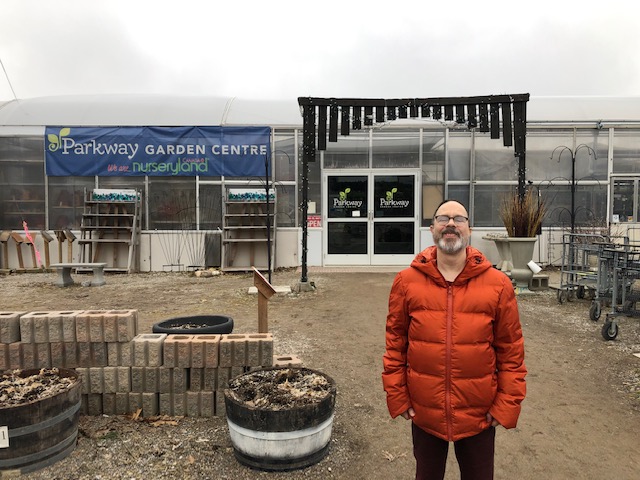While checking social media platforms, browsing the internet, and navigating video/ audio streaming services are routine for some, they open many doors of accessibility for others.
For Steven, a man with deafblindness, Facebook and email connect him with the outside world. “I communicate online because I like to talk to people… it is faster and easier [for me] to communicate”.
Deafblindness combines varying degrees of both hearing and vision loss, making it unique to each individual and requiring specialized support. Born with Rubella, also known as the German measles, Steven is profoundly deaf and blind in his left eye. He is legally blind in his right.
Individuals with deafblindness have the capacity to build their life skills, gain independence and contribute to the greater community with the support of professional intervenors. Amy, one of the intervenors that supports Steven, has worked in the field for 16 years; 11 of those with DeafBlind Ontario Services.
DeafBlind Ontario Services is a not-for-profit organization that helps individuals with deafblindness increase their independence and improve their quality of life through specialized services. Today, they support over 75 individuals like Steven across the province. According to a report from the World Federation of the Deafblind, individuals who are deafblind represent between 0.2% and 2% of the global population.
The philosophy of DeafBlind Ontario Services’ intervenors is “do with, not for”. They work with people with deafblindness, helping them learn through experience, empowering them to make informed decisions, and be active participants in all areas of their lives.
Amy and Steven take a Total Communication Approach, which uses as many methods of communication as needed to facilitate the exchange of information. Steven uses Signing Exact English (SEE), a system of manual communication that strives to be an exact representation of English vocabulary and grammar. He also utilizes Braille and large print, along with large print notes for those with little experience with sign. In recent years, Steven has benefited from technological advancements with respect to communication.
He uses an iPad and computer on a daily basis to email, share on Facebook, converse through Facebook Messenger, and video chat with his family, friends, and intervenors. Steven uses the internet to search activities he may be interested in, as well as sports teams’ schedules and scores (his favourite teams include the Toronto Maple Leafs, Edmonton Oilers, and Toronto Blue Jays). He also emails about his plans for the week and his budget for weekly activities.
According to Amy, “Steven likes a variety of ways to communicate with friends and family that do not live close to him in London, Ontario. Without the internet and social media, Steven would not be able to socialize as often with everyone in his life and stay connected.”
Technology also benefits Steven by enhancing his independence at home and in the community. He has a device connected to his phone, alarm clock, and doorbell that flashes when they ring. If the fire alarm at his apartment were to sound while he is a sleeping, a vibrating mat under his mattress will alert him.
To participate in the London community, Steven uses a TTY service to organize his Paratransit through London Transit. If he needs anything while he is out and about, he uses his iPad to communicate.
While Steven’s world is augmented by these mediums, accessibility-related barriers can also prevent people with disabilities from engaging online.
A barrier is anything that keeps a person with a disability from participating in the social or economic life of our communities. With respect to technology, this can mean websites, apps, PDFs, and videos that are inaccessible to assistive technologies.
Thursday, May 16th 2019, marks the eighth annual Global Accessibility Awareness Day (GAAD). This day aims to raise awareness about digital (web, mobile, software, etc.) access and inclusion for those with different abilities.
“Digital innovations continue to reshape society on many levels; their potential to advance and impact daily living, like for Steven, are undeniable. However, over 15% of Ontario’s population has a disability, whether visible or not. This number will only continue to grow as the population ages. We must look at making technology accessible and useable by persons with disabilities”, said Chief Executive Officer, Roxanna Spruyt-Rocks.
For thirty years, DeafBlind Ontario Services has been enriching lives, one touch at a time for individuals with deafblindness. Since their beginning in 1989, they have made it their mission to inspire the spirit and determination of the people they support. To learn more, visit www.deafblindontario.com and celebrate GAAD on May 16th using the hashtag #gaad.




Recent Comments